Unit 2: Egypt, Greece, and Rome. (images 12-47)
1/37
Earn XP
Name | Mastery | Learn | Test | Matching | Spaced |
|---|
No study sessions yet.
38 Terms
12. White Temple and its Ziggurat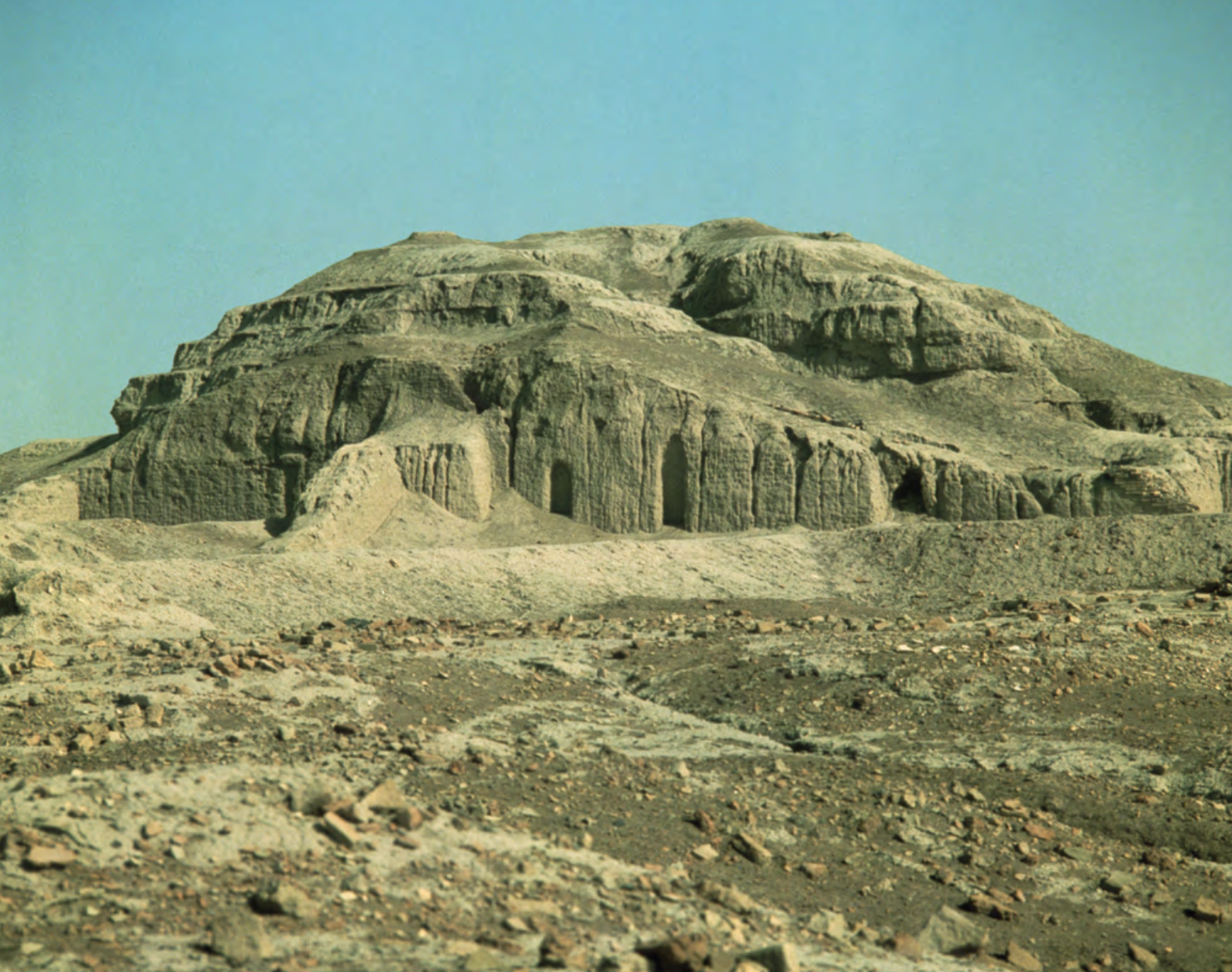
When was it created?
During what period was it created?
Where was it originally located?
What culture made it?
What medium was used?
What was the function?
3,500-3,000 B.C.E.
Ancient Mediterranean
Ancient Uruk (modern Warka, Iraq)
The Sumerians
Mud brick
Served for government and religious purposes, like rituals and sacrafices.
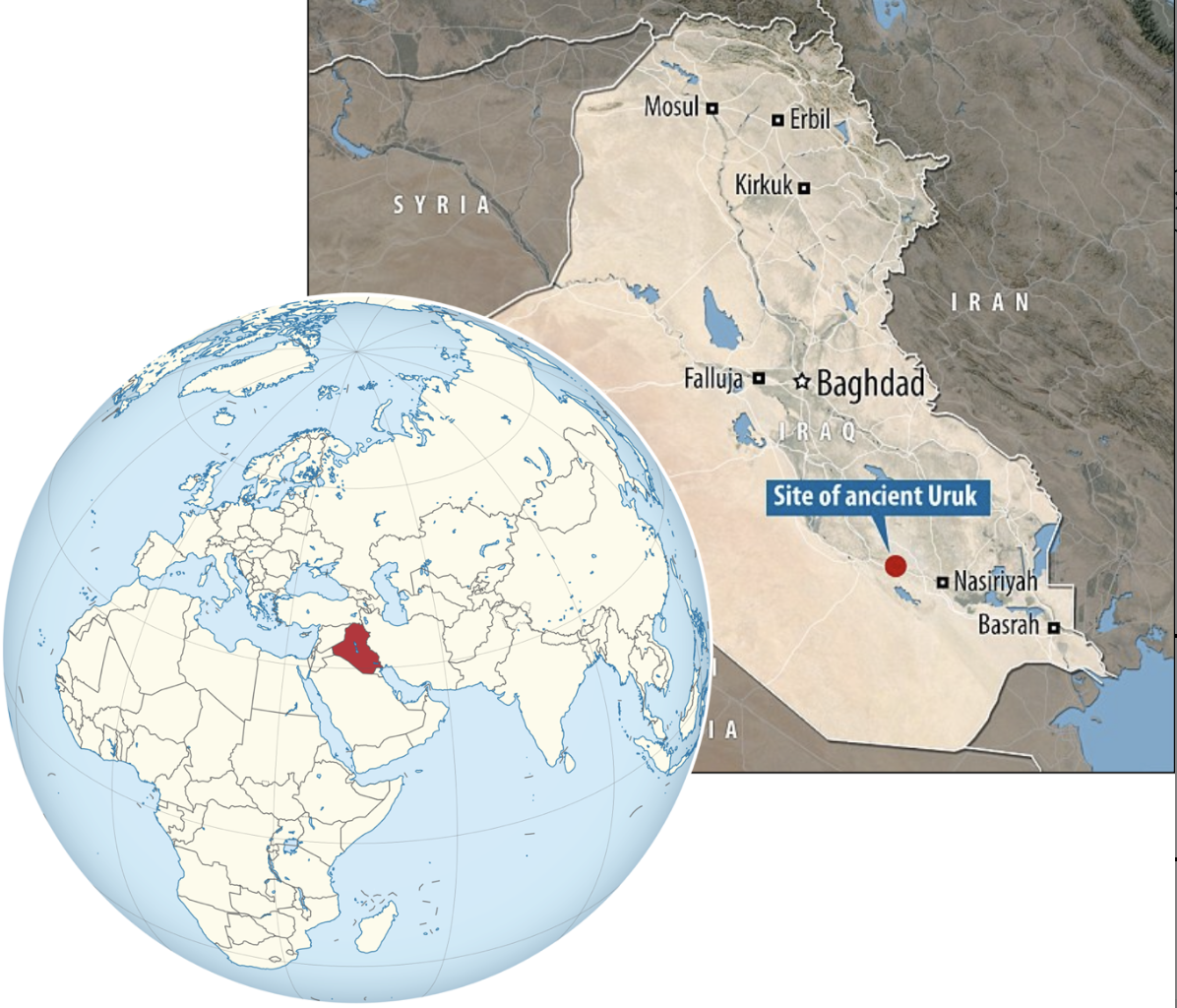
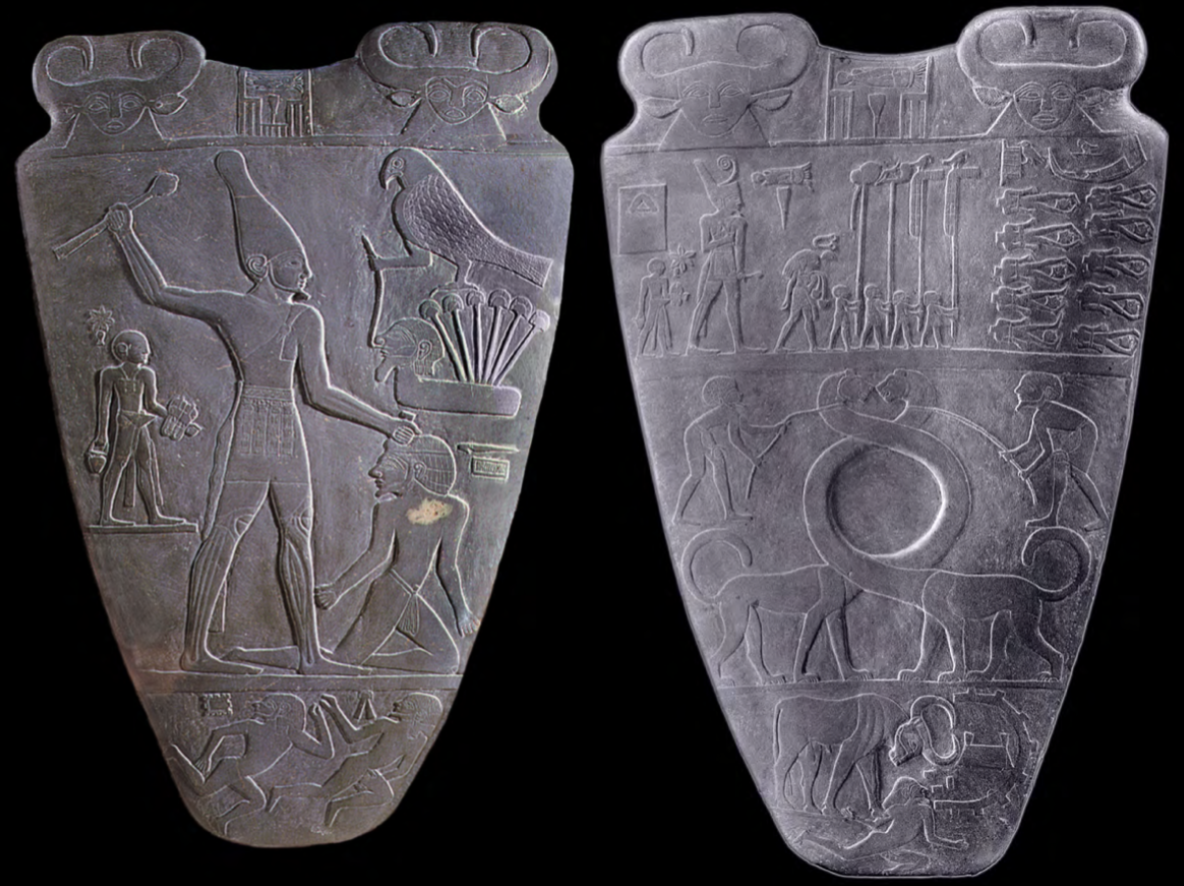
13. Palette of King Narmer
When was it created?
During what period was it created?
Where was it originally located?
What culture made it?
What medium was used?
What was the function?
3,000-2,920 B.C.E.
Predynastic Egypt
Burried under the floor of the temple of Horus in Hierakonopolis, the capital of predynastic Egypt.
Ancient Egyptians
Greywacke stone in low relief
Used for grinding and mixing materials.
Could have been a ceremonial object as a religious offering.
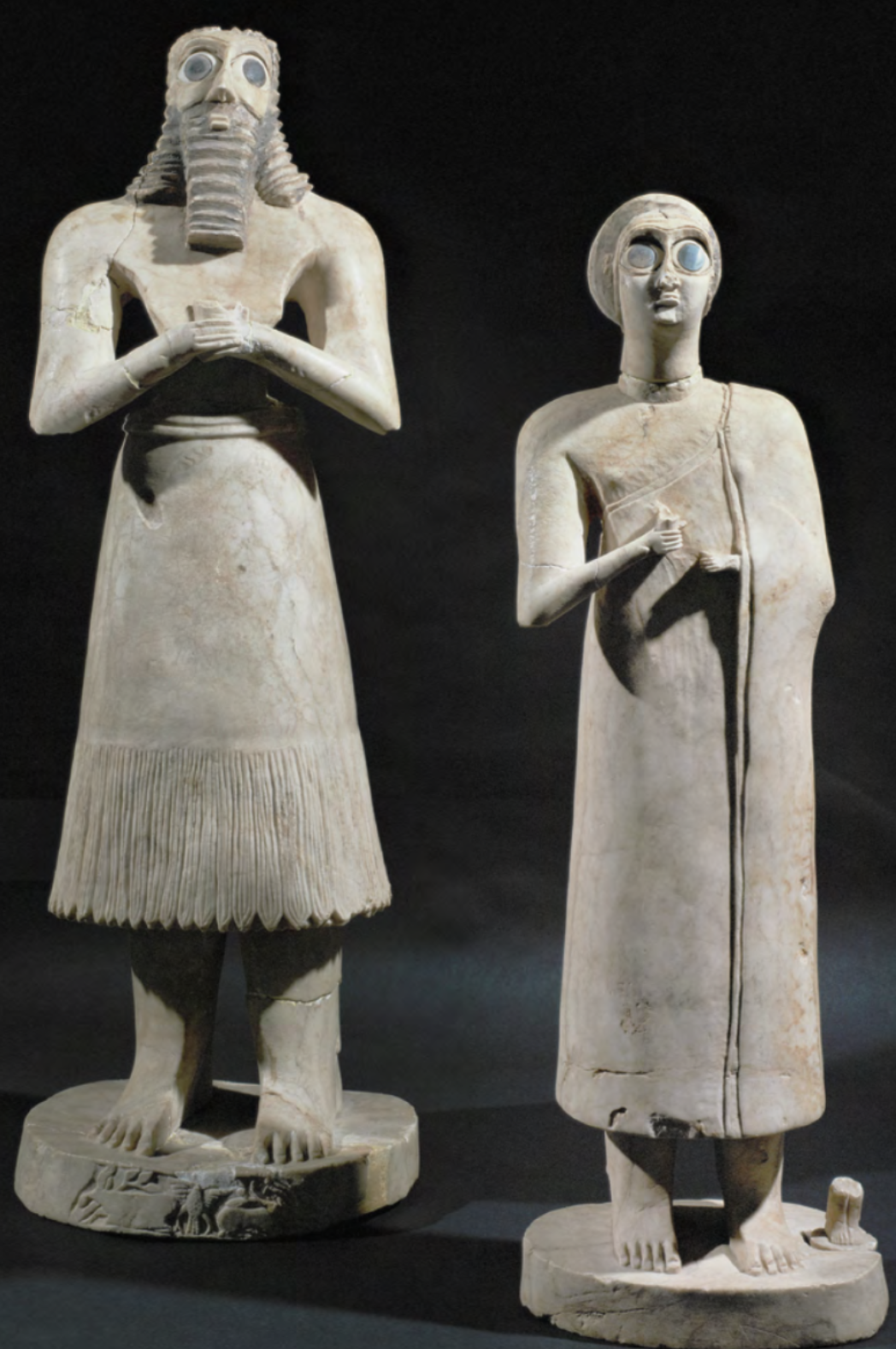
14. Standing Votive Statues
When was it created?
During what period was it created?
Where was it originally located?
What culture made it?
What medium was used?
What was the function?
2,700 B.C.E. (28th C B.C.E.)
Ancient Mediterranean
In the Square Temple at Eshnunna, Iraq.
The Sumerians
Some were made of gypsum, limestone, or alabaster, inlaid with shell or black limestone.
Maybe they were part of a devotional practices.
Maybe for decorations in a temple depicting signs of faith.

15. Seated Scribe
When was it created?
During what period was it created?
Where was it originally located?
What culture made it?
What medium was used?
What was the function?
2,620-2,500 B.C.E. (27-26th C B.C.E.)
Ancient Mediterranean Period, in the Old Kingdom, Fourth Dynasty
In Saqqra Egypt
The culture/people from Ancient Egypt.
Limestone and paint
Could have served funerary purposes meant for a tomb to represent their status/importance.
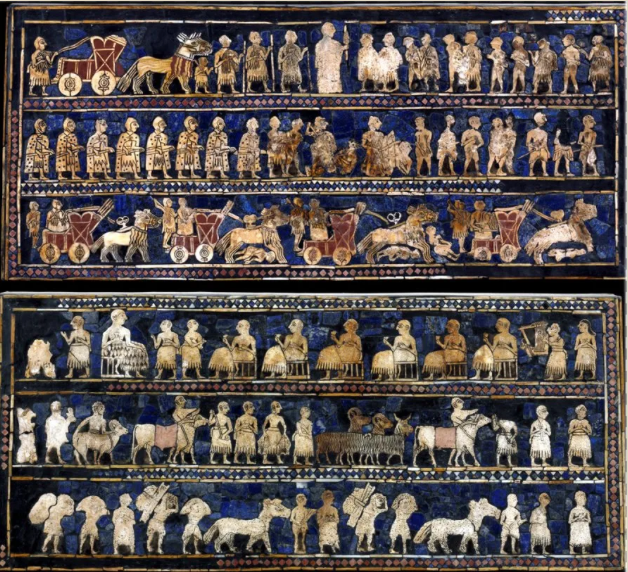
16. Standard Ur
When was it created?
During what period was it created?
Where was it originally located?
What culture made it?
What medium was used?
What was the function?
2,600-2,400 B.C.E. (27-25th C B.C.E.)
Ancient Mediterranean
In a tomb in a royal cemetery in the Ancient city of Ur, Iraq.
The Sumerians
Wooden frame and mosaic shell, red limestone, and lapiz lazuli (not locally found).
It is thought to have served for funerary purposes.
Is speculated for musical purposes, as a stand for a flag pole, or to celebrate military victories
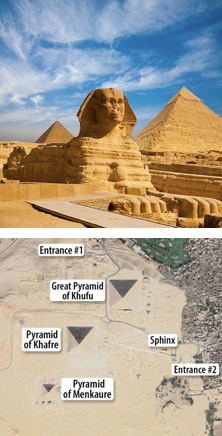
17. Great Pyramids of Giza: Khufu, Khafre, Menkaura, Great Sphinx
When was it created?
During what period was it created?
Where was it originally located?
What culture made it?
What medium was used?
What was the function?
2,550-2,490 B.C.E. (26-25th C B.C.E.)
Old Kingdom, Fourth Dynasty.
In Giza Cairo, Egypt
Ancient Egyptians
The PYRAMIDS where made using blocks of cut limestone from a local quarry, and the SPHINX is carved from bedrock of the Giza Plain.
PYRAMIDS were made to store tombs and legacies of the respective kings for the after life. The three tinier pyramids were for each king’s queen.
The SPHINX is speculated to represent king Khafre or his spiritual guardian.
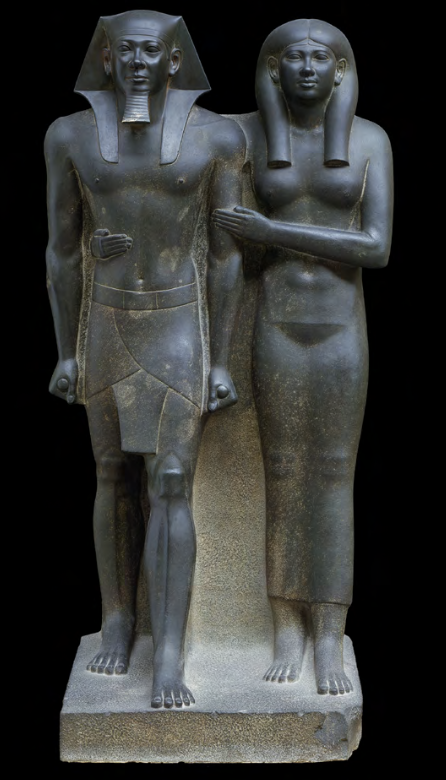
18. King Menkaura and Queen
When was it created?
During what period was it created?
Where was it originally located?
What culture made it?
What medium was used?
What was the function?
2,490-2,472 B.C.E. (25th C B.C.E.)
During the Old Kingdom, Fourth Dynasty.
Originally found inside the Pyramid Menkara in Giza Egypt.
The Ancient Egyptians.
Made from greywacke stone (to represent the permanence of the pharo’s presence).
Likely sculpted to store the Ka (life energy) of the pharaoh and his queen, in order to ensure the rebirth of the king in the afterlife.
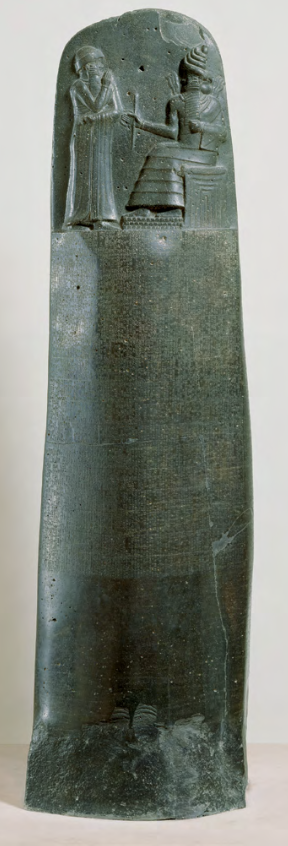
19. Code of Hammurabi
When was it created?
During what period was it created?
Where was it originally located?
What culture made it?
What medium was used?
What was the function?
1,792-1,750 B.C.E. (18th C B.C.E.).
During Ancient Mediterranean Period.
In Babylon, Iran.
The Babylonian culture.
Made from a carved long, basalt rock.
Written in cuneiform are 282 inscribed law entries that document the fines and punishments for crimes.
The hierchal scale was intended to cause a sense of respect for the laws on the stele by suggesting their divine origin.
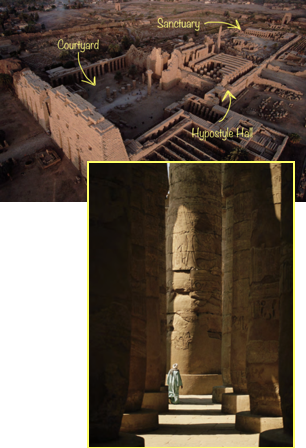
20. Temple of Amun-Re and Hypostyle Hall
When was it created?
During what period was it created?
Where was it originally located?
What culture made it?
What medium was used?
What was the function?
1550 B.C.E. (16th C B.C.E.)
During New Kingdom, 18-19th Dynasties.
In Karnak, Egypt.
The Ancient Egyptians.
From cut sandstone and mud bricks.
Was to worship Amun (god of air) and Ra (sun god).

21. The Mortuary Temple of Hatshepsut
When was it created?
During what period was it created?
Where was it originally located?
What culture made it?
What medium was used?
What was the function?
1473-1458 B.C.E. (15th C B.C.E.).
During New Kingdom, 18th Dynasty.
Found near Luxor, Egypt, by a clliff location to create a sense of stability and permanence.
The Ancient Egyptians.
The TEMPLE is made from sandstone and the STATUES of Hatshepsut were carved from granite.
Thought to have served the royal mortuary cults, which was fufilled after building a mortuary cult complex where offerings could be made for the Ka of the King.
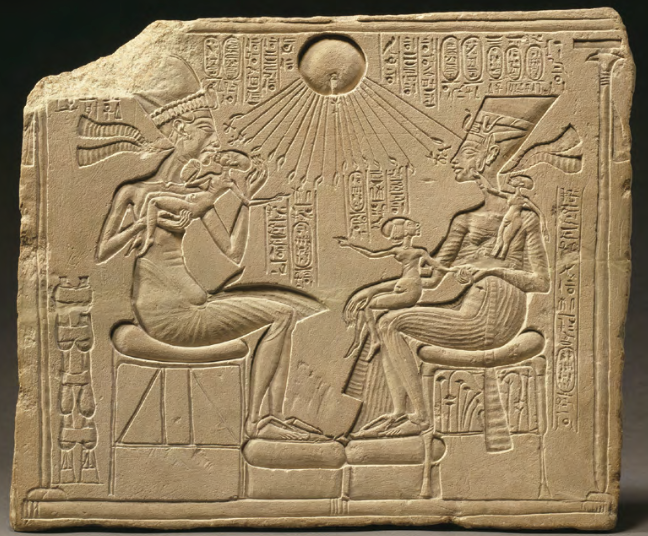
22. Akhenaten, Nefertiti, and three daughters
When was it created?
During what period was it created?
Where was it originally located?
What culture made it?
What medium was used?
What was the function?
1353-1335 B.C.E. (14th C B.C.E.).
During 18th Dynasty, New Kingdom.
In Amarna, Egypt.
The Ancient Egyptians.
Carved from limestone.
Probably served to get closer to their sun god, Aten, and to give the royal family more authority.
Could have been used as a household altar.

23. Tutankhamun’s Tomb, innermost coffin
When was it created?
During what period was it created?
Where was it originally located?
What culture made it?
What medium was used?
What was the function?
1323 B.C.E. (14th C B.C.E.).
During New Kingdom, 18th Dynasty.
In the Valley of the Kings, Luxor/Thebes, Egypt.
The Ancient Egyptians.
From gold with inlays of enamel and semi-precious stones.
Is a sarcophagus that is meant to hold the body of the king.
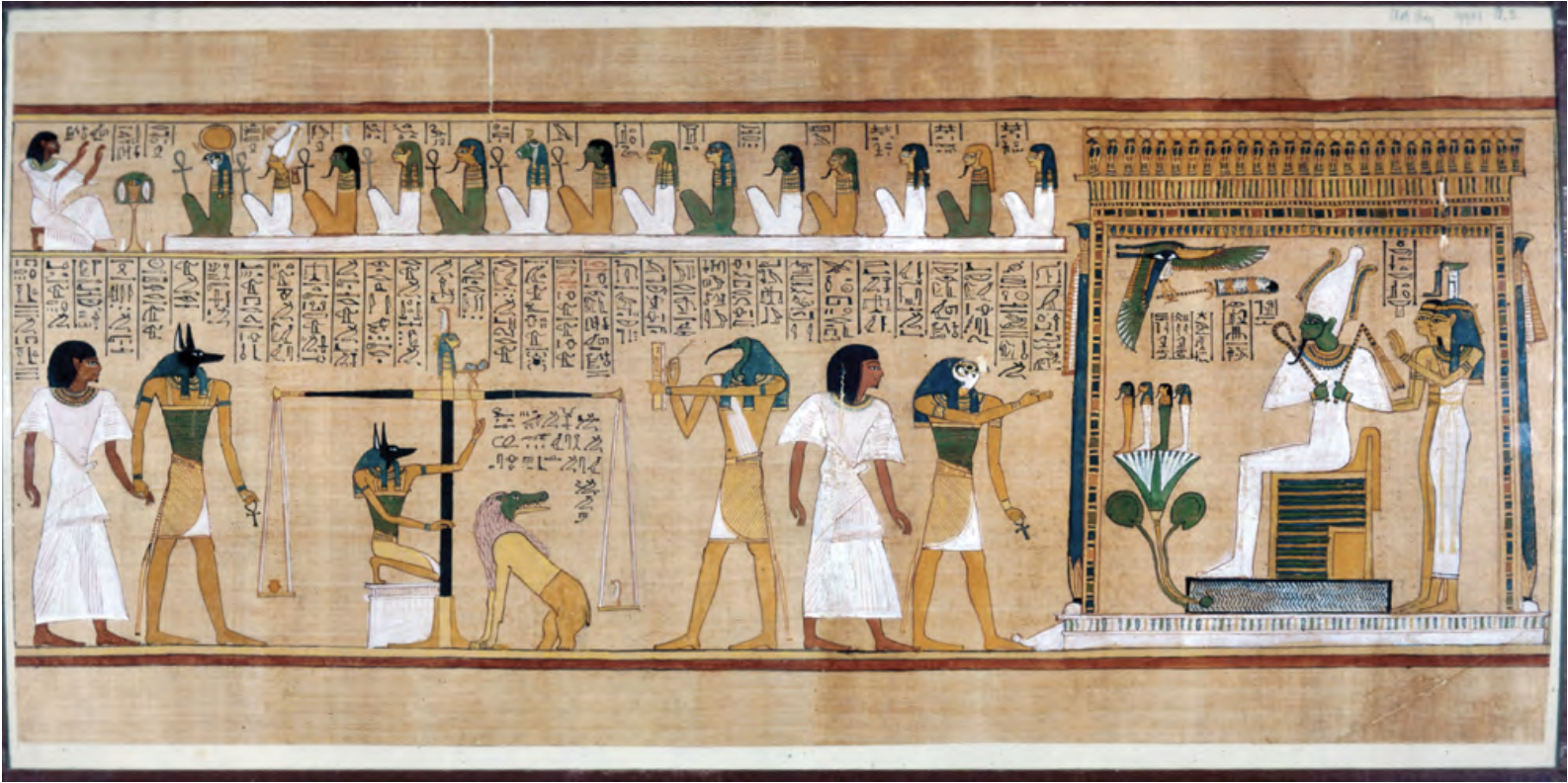
24. The Last Judgement of Hunefer, from his tomb (Page from the Book of the Dead)
When was it created?
During what period was it created?
Where was it originally located?
What culture made it?
What medium was used?
What was the function?
1275 B.C.E. (13th C B.C.E.).
During New Kingdom, 19th Dynasty.
Inside a tomb in Thebes, Egypt.
The Ancient Egyptians.
Painted on a papyrus scroll using colors.
Meant to aid in the guidance and to protect the deceased in their transition to the afterlife.
Relates to the ancient Egyptian concept of justice and mortality by depicting divine judgement.
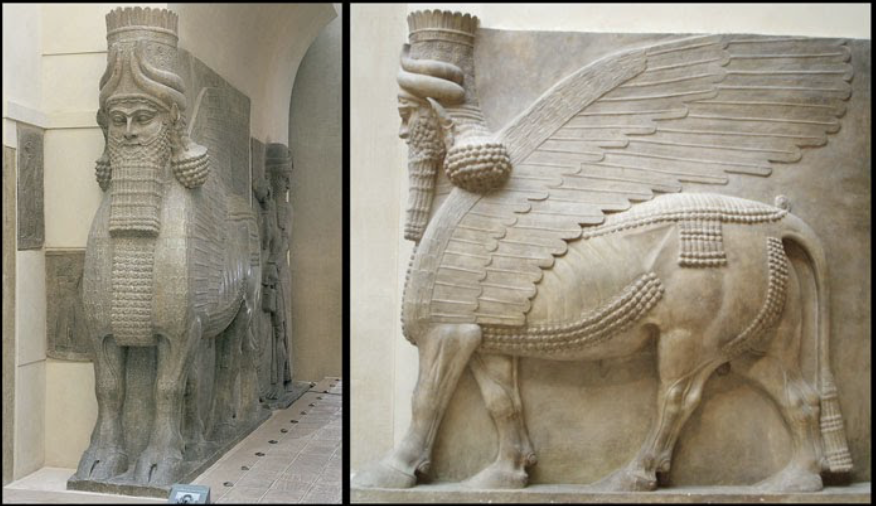
25. Lamassu from the Citadel of Sargon, Dur Sharrukin
When was it created?
During what period was it created?
Where was it originally located?
What culture made it?
What medium was used?
What was the function?
720-705 B.C.E. (8th C B.C.E.).
During Ancient Mediterranean.
In standing at the entrance of palaces in ancient Assyrian cities in Khorsabad, Iraq.
The Neo-Assyrians.
Sculpted from gypseous alabaster.
Made to serve as an imposing guardian for the city, meant to safeguard the entrance of te royal complex.
Remind subjects of the king’s power.
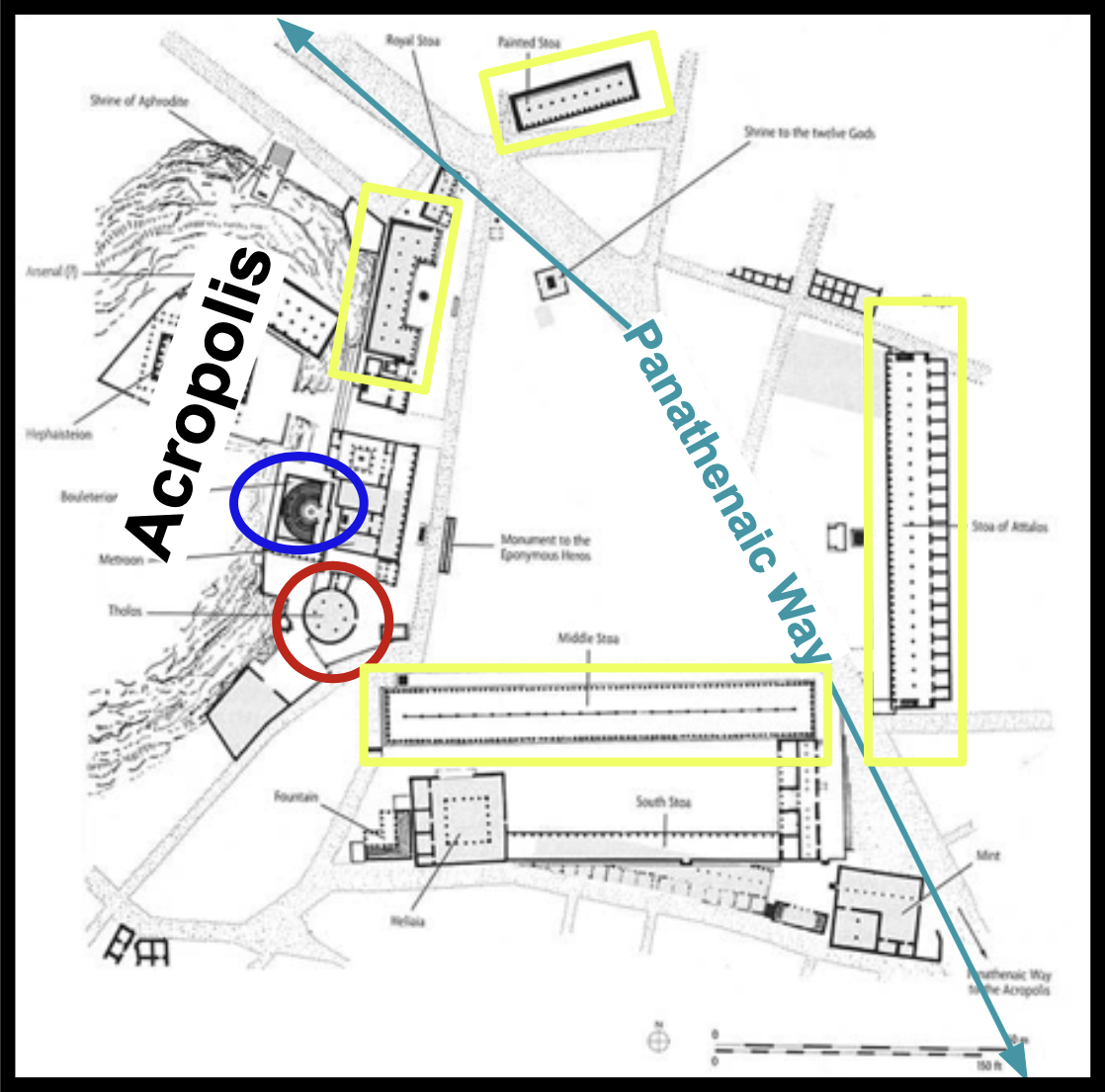
26. Athenian Agora
When was it created?
During what period was it created?
Where was it originally located?
What culture made it?
What medium was used?
What was the function?
600-150 B.C.E. (7-2th C B.C.E.).
During Archaic Greek through Hellenistic Greek.
Found at the base of Acropolis in Athen, Greece.
The Ancient Greeks.
Using marble.
Was to be the center of political and public life. It was an open square space that is used as a meeting ground or business for different activities of the citizens.
The citizens likely reated to this place with a sense of civic pride since it represented a place of communal governance and cultural identity.
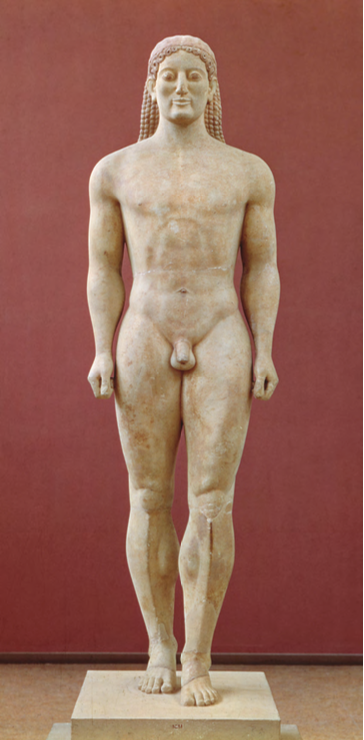
27. Anavysos Kuoros
When was it created?
During what period was it created?
Where was it originally located?
What culture made it?
What medium was used?
What was the function?
530 B.C.E. (6th C B.C.E.).
During Archaic Greek.
In Anavysos, Greece.
The Ancient Greeks.
Using paint on sculpted marble.
Is a grave marker (probably of an athlete or warrior) that depicts an idealized young male with an archaic smile that is meant to give life like qualities.
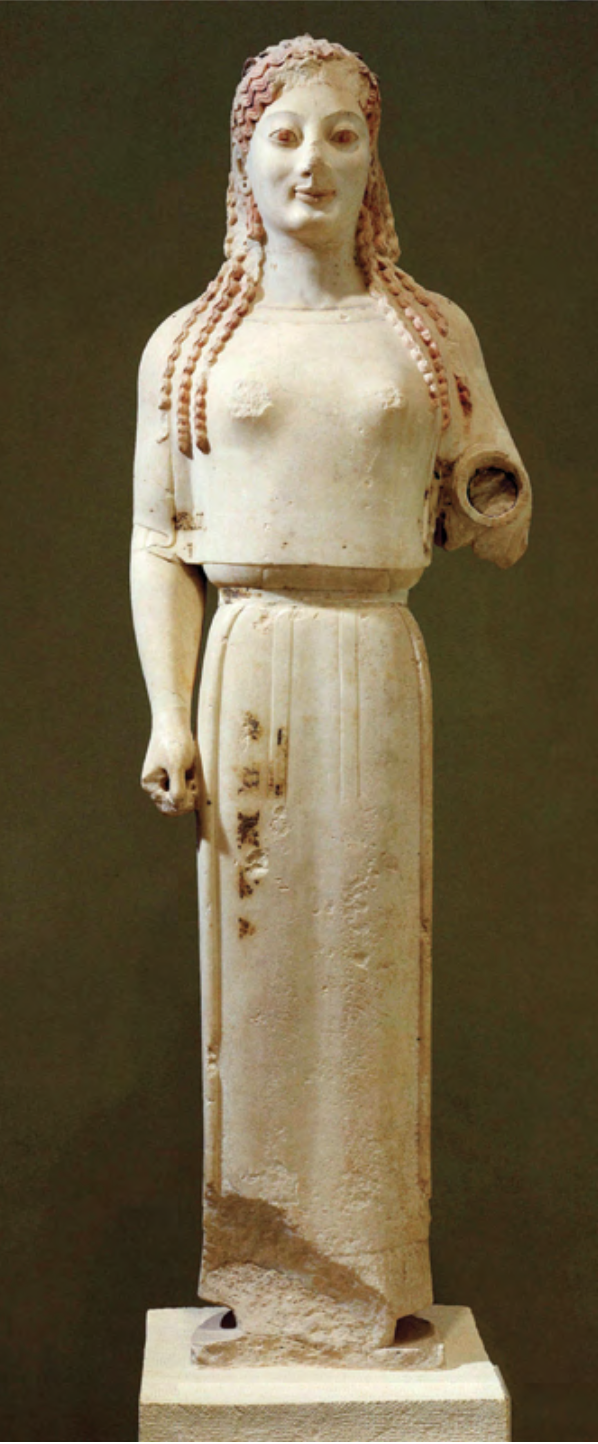
28. Peplos Kore from the Acropolis
When was it created?
During what period was it created?
Where was it originally located?
What culture made it?
What medium was used?
What was the function?
530 B.C.E. (6th C B.C.E.).
During Archaic Greek.
Found buried in Acropolis, Athens, Greece.
The Ancien Greeks.
From carved and painted marble.
Usually used as a grave marker or, more often, as votive offering to the gods.
She is thought to be originally portrayed as the goddess Athena or as the goddess of hunt
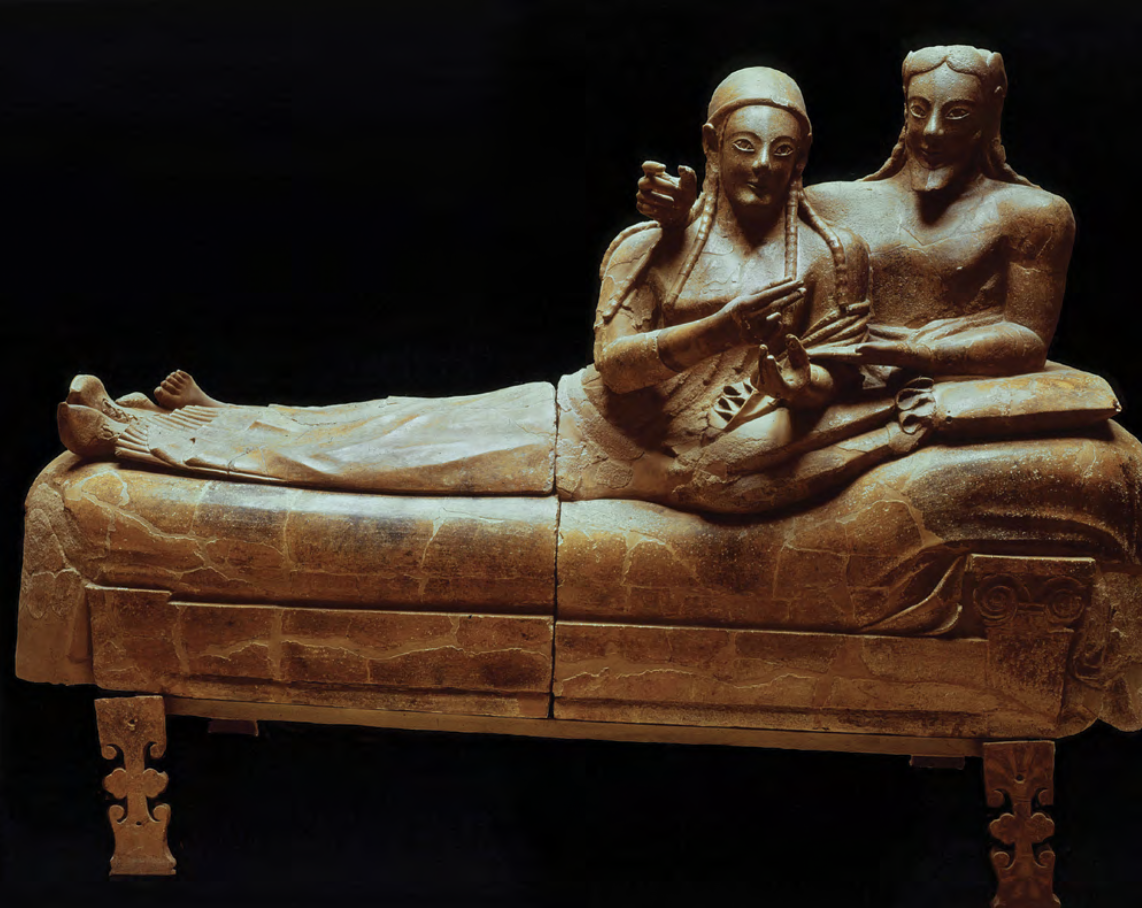
29. Sarcophagus of the Spouses
When was it created?
During what period was it created?
Where was it originally located?
What culture made it?
What medium was used?
What was the function?
520 B.C.E. (6th C B.C.E.).
During Ancient Mediterranean/Archaic period.
Found in Necropolis, the Etruscan city of Caere (Current day Centeri, Italy).
The Etruscans.
From four molded terracotta pieces that were joined together.
Used as a sarcophagus of the spouses that would have contained cremented human remains.
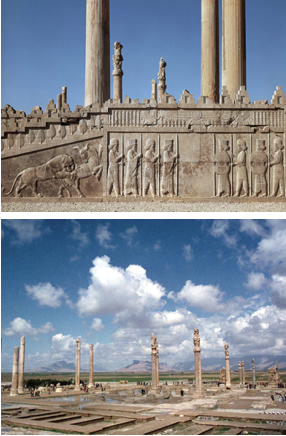
30. The Audience Hall (apadana) of Darius and Xerxes
When was it created?
During what period was it created?
Where was it originally located?
What culture made it?
What medium was used?
What was the function?
520-460 B.C.E. (6-5th C B.C.E.).
During Achaemenid Empire.
Found in Persepolis, Iran.
The Persians.
From limestone.
Probably built as a ceremonial building that held large audiences.
Presumed to be the place where they recieved the king of the Achaemenid Empire and represent royal authority.
The sculptures and reliefs are thought to tell processional story or traditions of the Persian New Year.
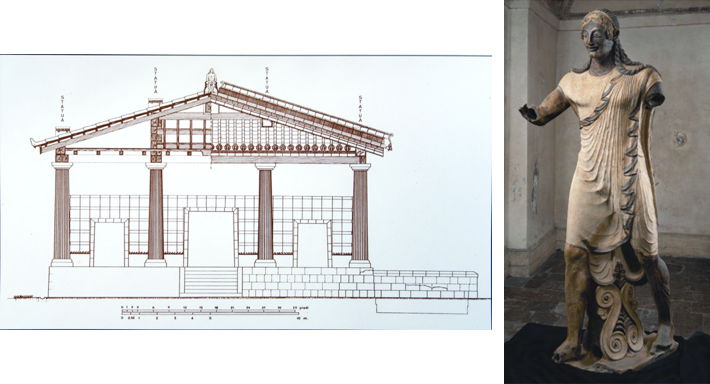
31. Temple of Minerva and sculpture of Apollo
When was it created?
During what period was it created?
Where was it originally located?
What culture and artist made it?
What medium was used?
What was the function?
510-500 B.C.E. (6th C B.C.E.).
During Ancient Etruscan.
Found in Veii, Italy.
The Etruscans, most likely master sculptor Vulca.
The TEMPLE was made from ephemeral materials (like wood, mud, brick, or tufa— a volcanic rock) andthe SCULPTURE was made from terracotta.
The TEMPLE was likely dedicated to the goddess Minerva and was a sacred space for ritual ceremony
The STATUE was set up on the pediment alongside other Etruscan assimilations of Greek gods, each set up as a tableau (group of models representing a scene to enact some mythic event). Thus, part of a narrative.
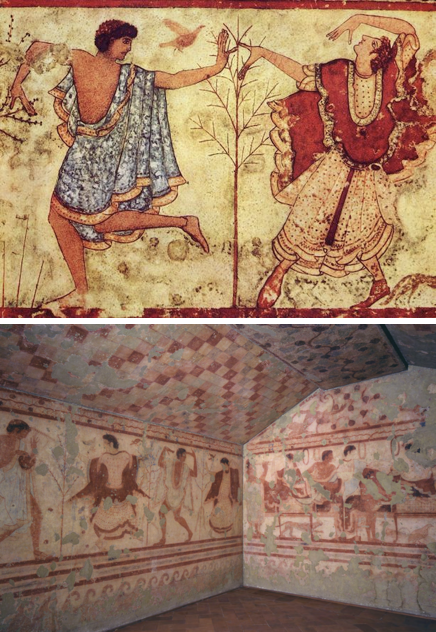
32. Tomb of Triclinium
When was it created?
During what period was it created?
Where was it originally located?
What culture made it?
What medium was used?
What was the function?
480-470 B.C.E. (5th C B.C.E.).
During Ancient Etruscan.
Found underground in dromos (tunnels made in that era) in Tarquinia, Italy.
The Etruscans.
Built from tuffa and used fresco for the paintings.
Was a tomb intentended to contain the remains of high-ranking members of society and various grave goods or offerings.
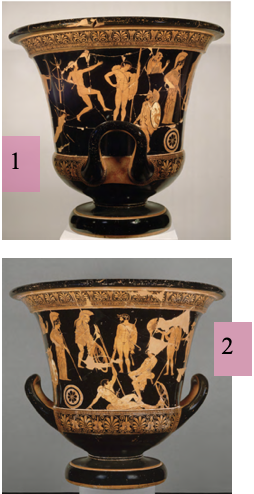
33. Niobides Krater
When was it created?
During what period was it created?
Where was it originally located?
What culture and artist made it?
What medium was used?
What was the function?
460-450 B.C.E. (5th C B.C.E.).
During Classical Greek.
Found in Orvieto, Italy.
An Ancient Greek anonymous artist known as Niobium Painter.
From clay using the red-figure techniques (black used to fill in negative spaces and create detail/contour lines on the figures).
Likely served as a ceremonial krater (a large vessel used to store/mix either wine or water).
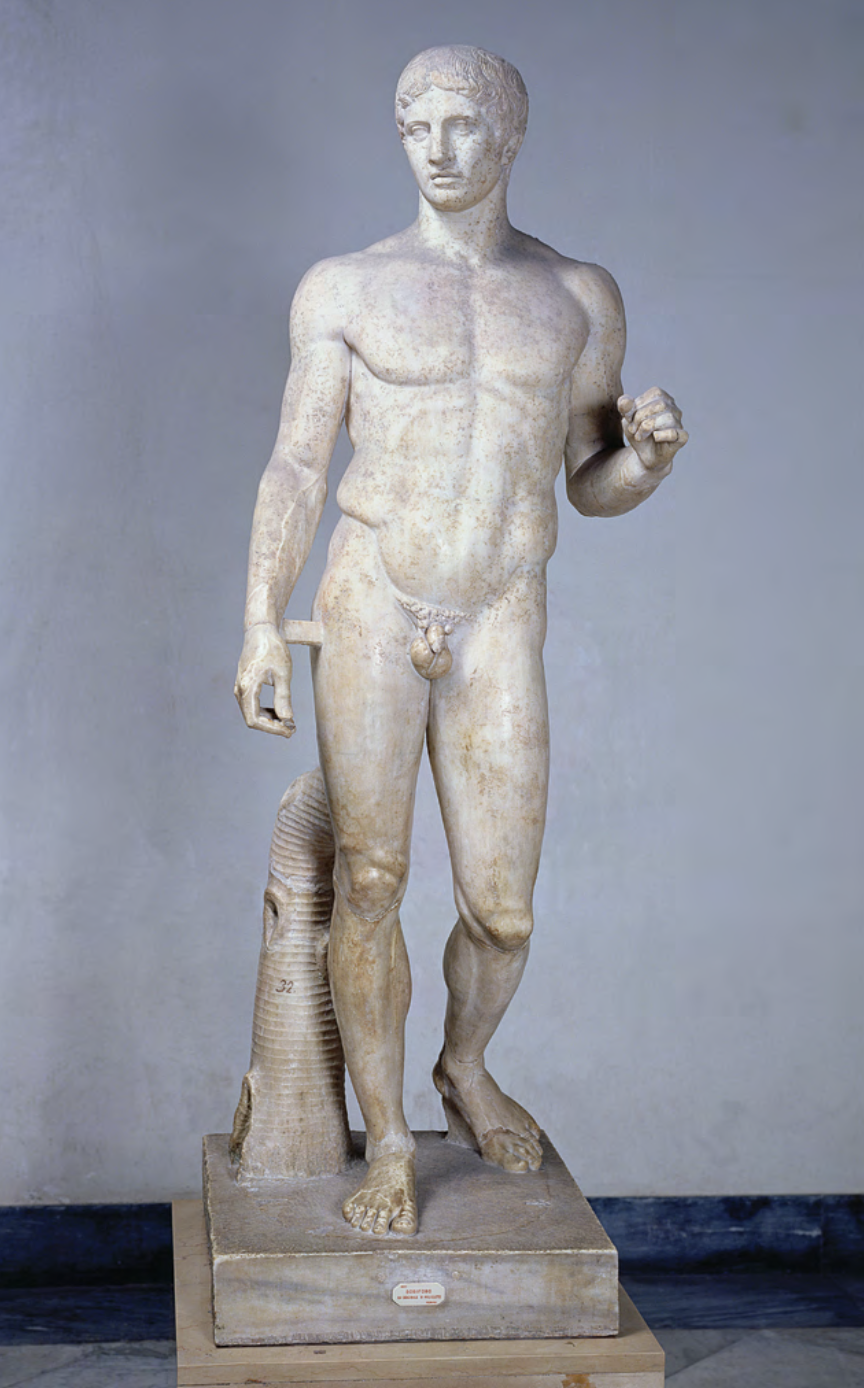
34. Doryphoros (Spear Bearer)
- When was it created?
- During what period was it created?
- Where was it originally located?
- What artist and culture made it? What medium was used?
- What was the function?
450-440 B.C.E. (5th C B.C.E.).
During Classical Greek.
In Palestra (a gymnasium), in Pompeii, Itally.
Polykleitos made the original Doryphoros out of bronze with a process called casting— pouring metal into a mold. Then the Ancient Greeks/Romans copied it and made many variations from marble with a substractive process.
Represented the ideal body since it followed the ideals from the original canon— a book that described Polykleito’s ideas that thought of beauty as a mathematical precision, as a balance. Thus, the followed those standards for beauty.
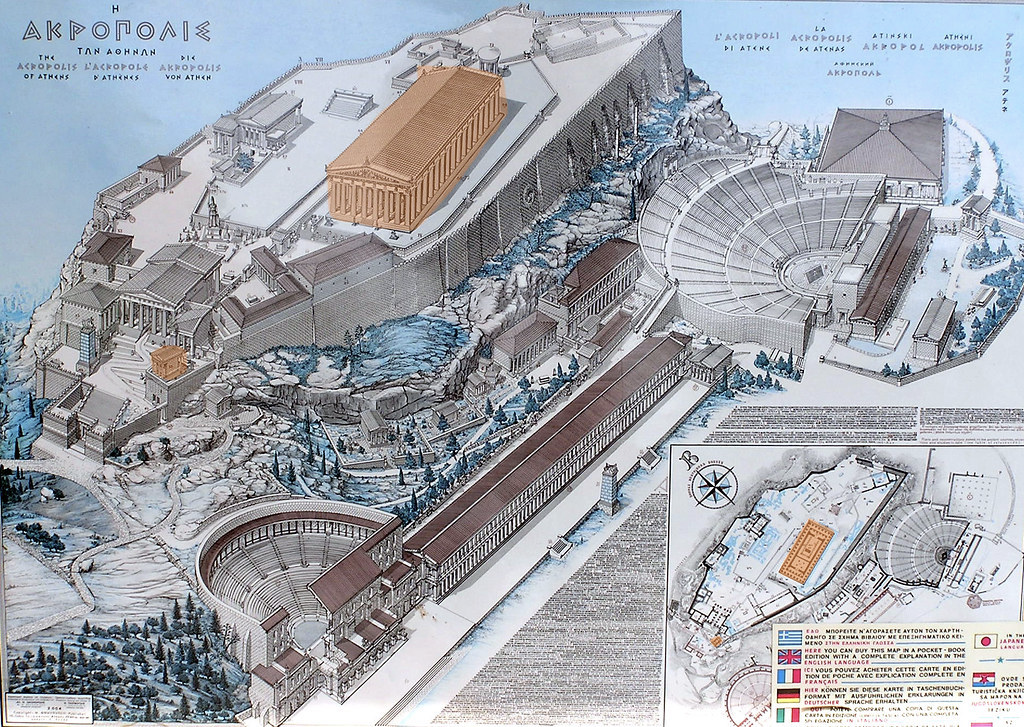
35. Acropolis *PART 1/3
- When was it created?
- During what period was it created?
- Where was it originally located?
- What artist and culture made it?
- What medium was used?
- What can be found here
- What was the function?
447-410 B.C.E. (5th C B.C.E.).
During Classical Period/Godlen Age.
Found on a hilltop near the Athenian Agora in Athens, Greece.
Pericles used tributed from Athenian allies to recontruct Acropolis. Meanting, the Ancient Greeks had to pay for it.
Built from marble after the original Acropolis got destroyed when the Persians sacked Athens.
The Parthenon and Temple of Athena Nike.
Was first built as a military base due to the topography and great view it offered of land and sea.
It was meant to be a ritual and political center of Athens.

35. The Parthenon from Acropolis *PART 2/3
When was it created?
During what period was it created?
Where was it originally located?
What artist and culture made it?
What medium was used?
What can be found here?
What was the function?
447-432 B.C.E. (5th C B.C.E.)
Classical Period/Golden Age.
In Acropolis of Athens.
Iktinos (supreme mathematician) and Kallikrates. Both are Ancient Greeks.
The TEMPLE was made from marble, and the COLOSSAL SATUE representing Athena (no longer exsists) was made with gold and ivory.
Helios, Horse, and Dionysus
It was sculpted by Phidias, who created the Phidian style— the extraordinary ability to render the human body and its clothing that reveals the body beneath it/ where the drapery acts like flowing water around the body.
Is part of a pediment at the roof from the Parthenon, depicting the birth of Athena.
The Palque of the Erganstines
Fragments of the painted friezes and is one of the few scultures that depict was was actually occurring in the temple. Thus, shows a contemporary event.
1) At first, it was built as a military base; 2) then as a temple for Athena; 3) as a Catholic Church for Christians; 4) as a mosque when Athens was conquered by the Ottomans; 5) as a gunpowder storage during the Venetian seige by the Turks (because of this, the temple blew up).
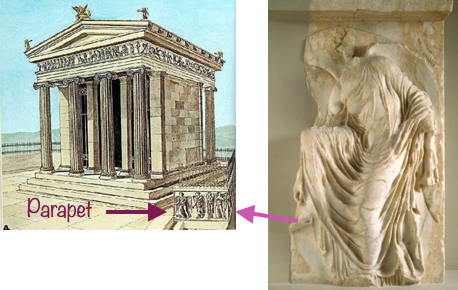
35. Temple of Athena from Acropolis *PART 3/3
When was it created?
During what period was it created?
Where was it originally located?
What culture made it?
What medium was used?
What can be found here?
What was the function?
427-424 B.C.E. (5th C B.C.E.).
Neolithic-Classical Period/Golden Age.
Found at the entrance of Acropolis, Greece, right before the gate house.
The Ancient Greeks.
Made from marble with the amphiprostyle— having columns in the front and back, but not along the sides.
Victory/Nike Adjusting her Sandal
Is part of the marble parapet (a railing with series of small figures) for the temple of Athena Nike.
It is one of the most erotic works of art in Acropolis.
This ionic temple was made in honor of Athena Nike, goddess of victory.
Was built to commemorate the Greek victory over the Persians in the Battle of Marathon.
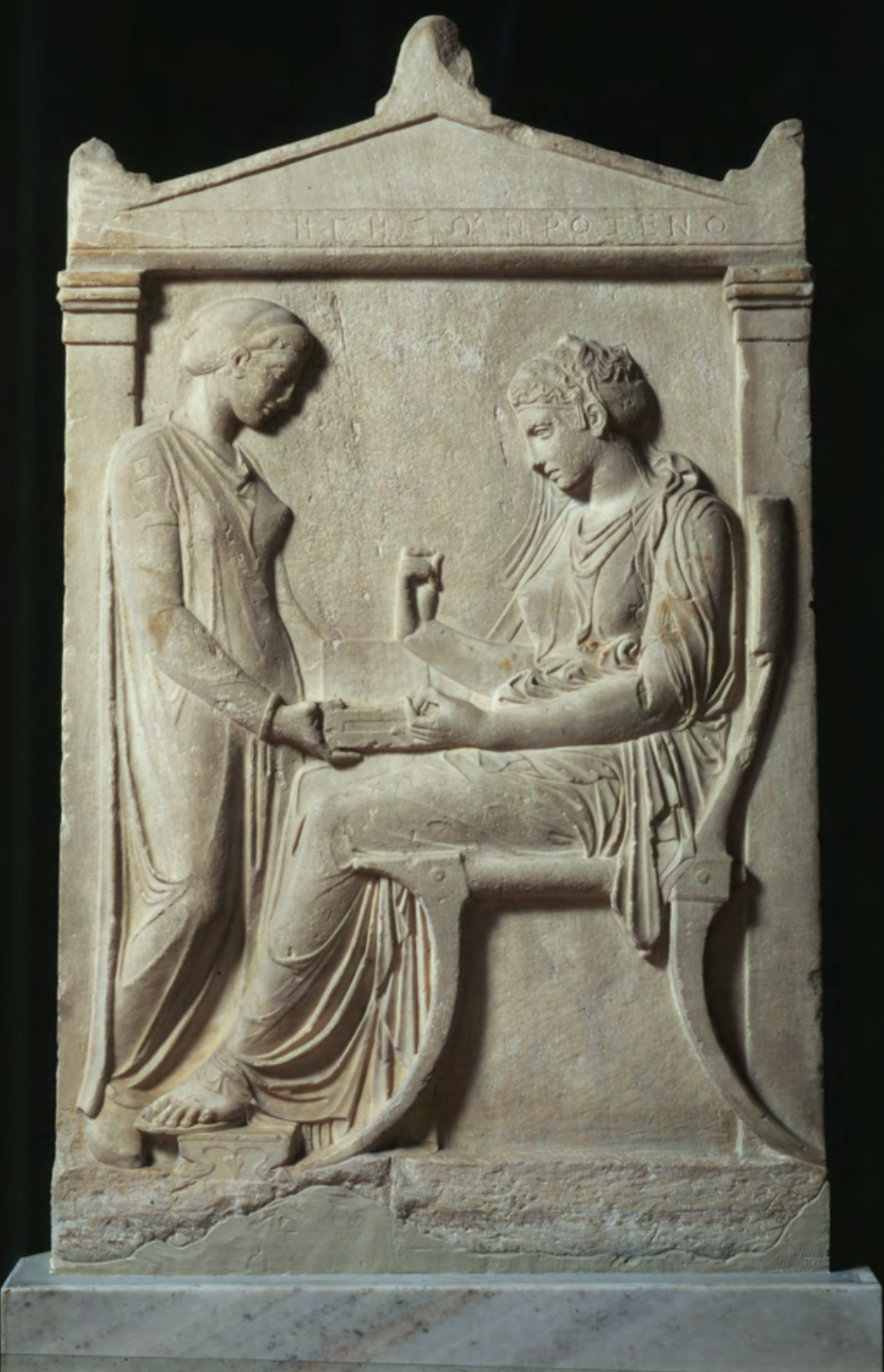
36. Grave stele of Hegeso
When was it created?
During what period was it created?
Where was it originally located?
What culture and artist made it?
What medium was used?
What was the function?
410 B.C.E. (5th C B.C.E.).
During Classical Greece.
In Kerameikos Cemetery, Athens.
The Ancient Greeks, presumed to be sculpted by Kallimachos.
From marble and paint.
Is thought to have served as a grave marker.
The scene from this woman’s stele, compared to a man’s stele, shows how men and women had different societal expectations and roles at the time.
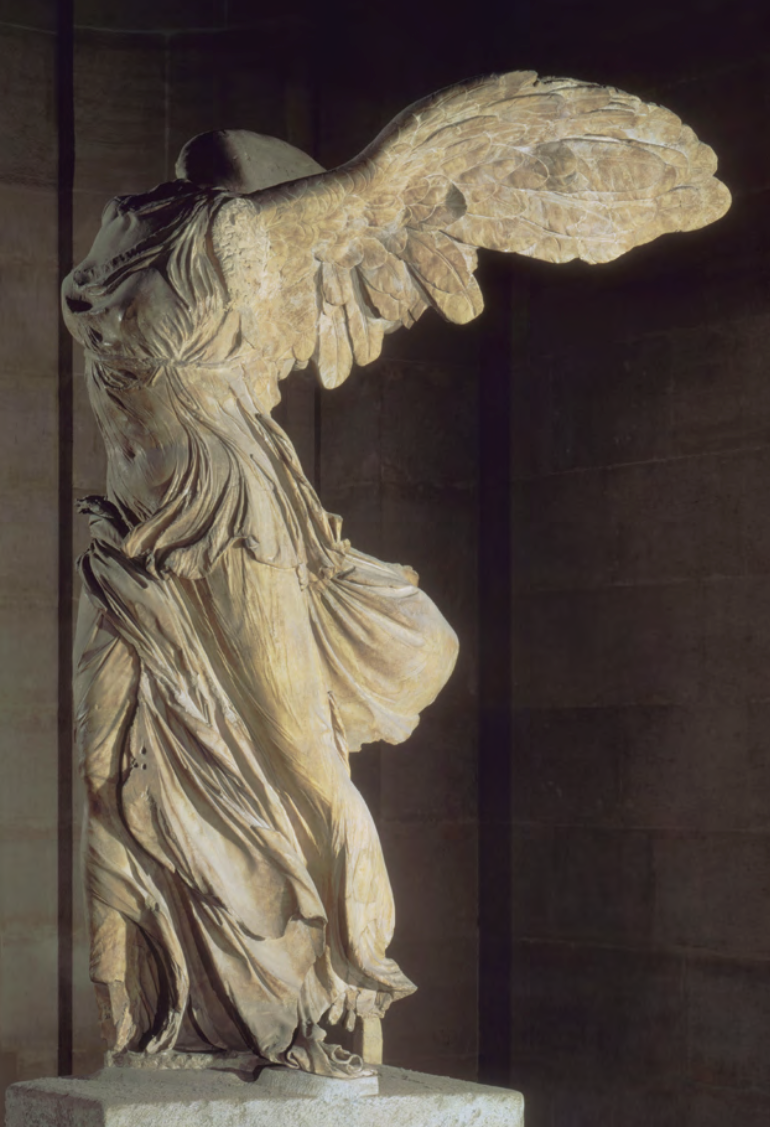
37. Nike (Winged Victory) of Samothrace
When was it created?
During what period was it created?
Where was it originally located?
What culture made it?
What medium was used?
What was the function?
190 B.C.E. (2nd C B.C.E.).
During Hellenistic Greek.
Found on the highest point in Sanctuary of the Great Gods, on the island of Samothrace, Greece.
The Ancient Greeks.
The STATUE was built from white Parian marble and the PROW of the ship she stands on is made of Lartos/Lartian marble from a quarry in Rhodes.
Was likely to symbolize military triumph, likely over the island of Rhodes.
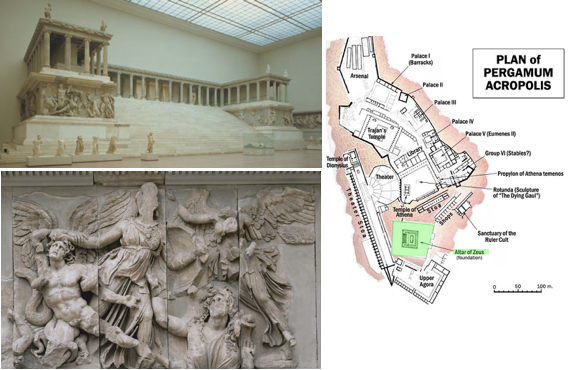
38. Great Altar of Zeus and Athena at Pergamon
When was it created?
During what period was it created?
Where was it originally located?
What culture made it?
What medium was used?
What was the function?
175 B.C.E. (2nd C B.C.E.).
During Hellenistic Greece.
In Asia Minor, Turkey.
The Ancient Greeks.
From marble.
Thought to have been made for the worship of the Gods Ahena and Zeus.
The reliefs and spatial illusions represents order over chaos with divine rationalism winning over discord and excess violence.
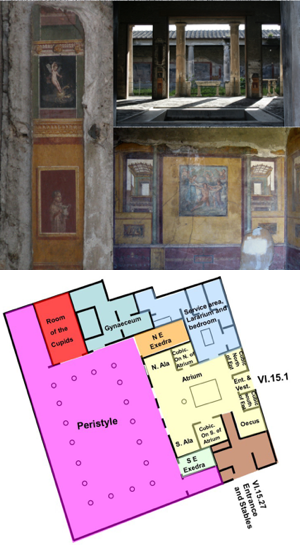
39. House of the Vettii
When was it created?
During what period was it created?
Where was it originally located?
What culture made it?
What medium was used?
What was the function?
Built in th 2nd C B.C.E. and was REBUILT in 62-79 C.E. (1st C).
During Imperial Roman.
In Pompeii, Rome, Italy.
The Ancient Romans.
Used cut stones and frescos (process of applying pigment directly onto fresh plaster) to create a sense of spatial depths by including illutionistic architectural features and vistas.
It was the home or domus— a type of townhouse— for a very prosperous family of freedman (former slaves). These men were Aulus Vettius Conviva and his brother. Because of this, to flaunt their wealth, the brothers placed two strongboxes and a painting of the Primps in the vestibule.
The peristyle garden served to impress visitors with the wealth and taste of the Patrons.

40. Alexander Mosaic from the House of Faun, Pompeii
When was it created?
During what period was it created?
Where was it originally located?
What culture made it?
What medium was used?
What was the function?
100 B.C.E.
During Republican Rome.
Found on the floor in the House of Faun in Pompeii, Italy.
The Ancient Romans.
Decorated the mural using mosaic, tesserae.
Made to convey the story of great Battle of Issus, between Alexander the Great (left) and Persian king Darius III.
These types of artworks were used to show the owner’s elevated status and taste and knowledge of Greek culture.

41. Seated Boxer
When was it created?
During what period was it created?
Where was it originally located?
What culture made it?
What medium was used?
What was the function?
100 B.C.E. (2nd C B.C.E.).
During Hellenistic Greek.
In Rome, Italy.
The Ancient Greeks.
From bronze casting.
May have been a good Luke charm for athletes (they would touch its feet).

42. Head of a Roman Patrician
When was it created?
During what period was it created?
Where was it originally located?
What culture made it?
What medium was used?
What was the function?
75-50 B.C.E. (1st C B.C.E.).
During Republican Roman.
In Otricoli (ancient Ocriculum), Rome.
The Ancient Romans.
Used substraction on a block of marble.
This veristic portrait— a type of hyperrealism in sculptures where the naturally occuring features of the subject are exaggerated— served funerary purposes. The choice of a veritic portrait style indicated that it was a Roman portraiture, since they were charcacterize primarly by its unidealized realism.
Was made to commemorate deceased relatives or the history of the upper class.
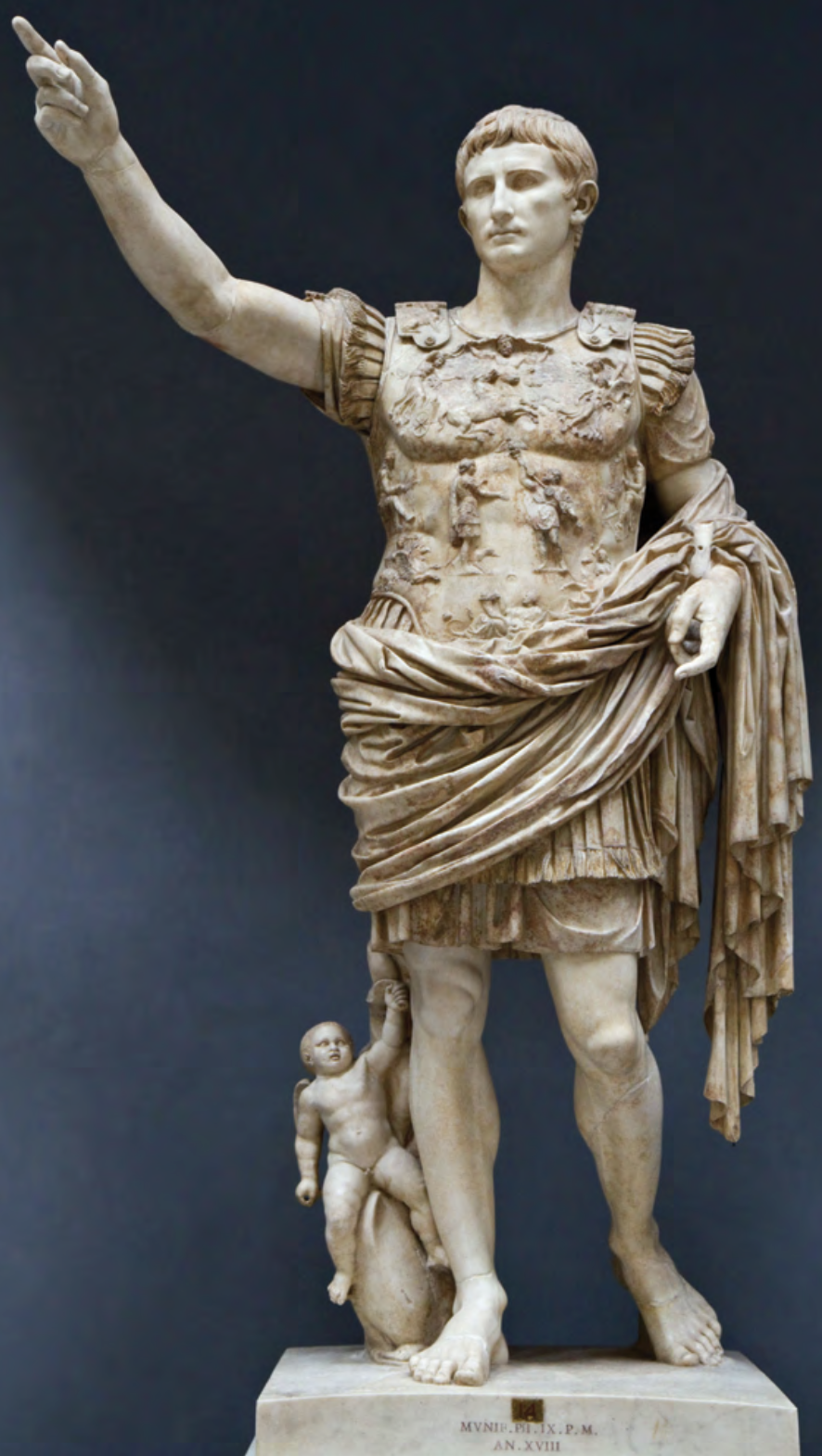
43. Augustus of Prima Porta
When was it created?
During what period was it created?
Where was it originally located?
What culture made it?
What medium was used?
What was the function?
1st C C.E.
During Imperial Rome
In Prima Porta, Rome.
The Ancinet Romans.
From carved (subtraction) marble.
Used for propaganda purposes to legitimize his authority by showing his connection to his past and gods, and to ratify his role as a military victor and bring of Roman piece (as seen in his breastplate/cuirass).
With cupid riding a dolphin beside him, he ratifies his power and right to rule.

44. The Colosseum (Flavian Amphitheator)
When was it created?
During what period was it created?
Where was it originally located?
Who was the patron?
What culture made it?
What medium was used?
What was the function?
70-80 C.E. (1st C).
During Imperial Rome of the Flavian Dynasty.
In Rome, Italy.
Commisioned by the Roman Emperor Vespasian (First Flavian Emperor), since he wanted to give something back to the poeple.
The Ancient Romans.
From stone and concrete blocks (a Roman inovation).
Was a place to watch spectacles for entertainment. These shows included:
Animals hunts- Exotic animals from Africa would end up being slaughtered for entertainment by gladiators.
Gladiatorial combats- Proffesionally trained slaved owned by the country would fiht each other, usually staging famous battles in history.
In sometimes executions were presented to the audience in a colorful and maginative way, like being burned alive.
With its localization, Emperor Vespasian intended to eradicate the memory and legacy of Emperor Nero (the emperor before Vespasian) and revitalize the city of Rome.
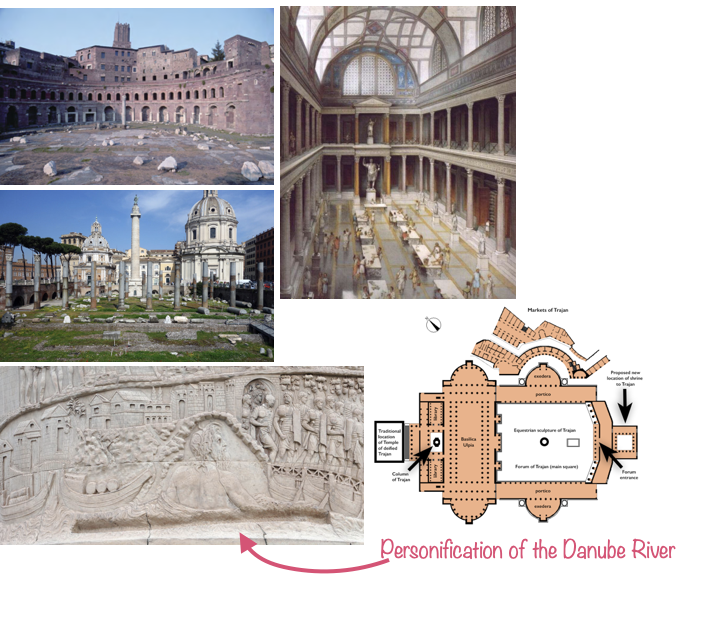
45. The Forum (and Market) of Trajan
When was it created?
During what period was it created?
Where was it originally located?
What artist and culture made it?
What medium was used?
What can be found here?
What was the function?
106-112 C.E.
During Imperial Rome.
In Rome, Italy.
Apollodorys of Damascus was the architect of the Forum and market, which was built by the Ancient Romans.
From bricks and concrete.
Calum of Trajan
Built in 113 C.E.
Has low relief images (with personifications for geographical context) that depict the Trajan’s war in Dacia. The bottom portrays the first war, and the top portrays the seccond war.
The MARKET had mercentile purposes, the FORUM served to honor Marcus Ulpius Traianus, and the COLUMN served to honor the Trajan’s victory against the Dacia.
Was a public, urban square used to conduct civinc and ritual business, like the Athenian Agora.
Trajan likely used his wealth from the military victory to build the for propaganda, showing Rome’s stability, power, and might.
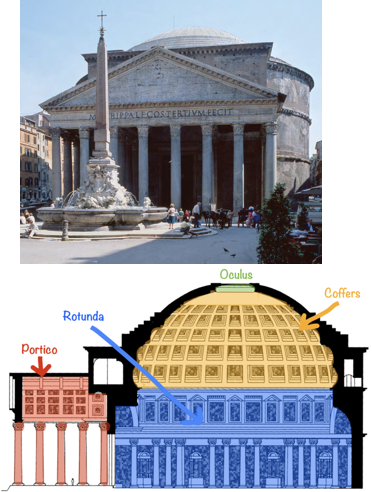
46. Pantheon
When was it created?
During what period was it created?
Where was it originally located?
Who is the patron?
What culture made it?
What medium was used?
What was the function?
118-125 C.E. (2nd C).
During Imperial Rome.
In Rome, Italy.
Commisioned by Emperor Marcus Agrippa, a Roman consul who served as an advisor to the first Roman emperor (Augustus).
The Ancient Romans.
From concrete.
Originally it was a temple to worship all Gods (as the name “Pantheon” translates to), but it is now a church named Santa Maria Rotonda.
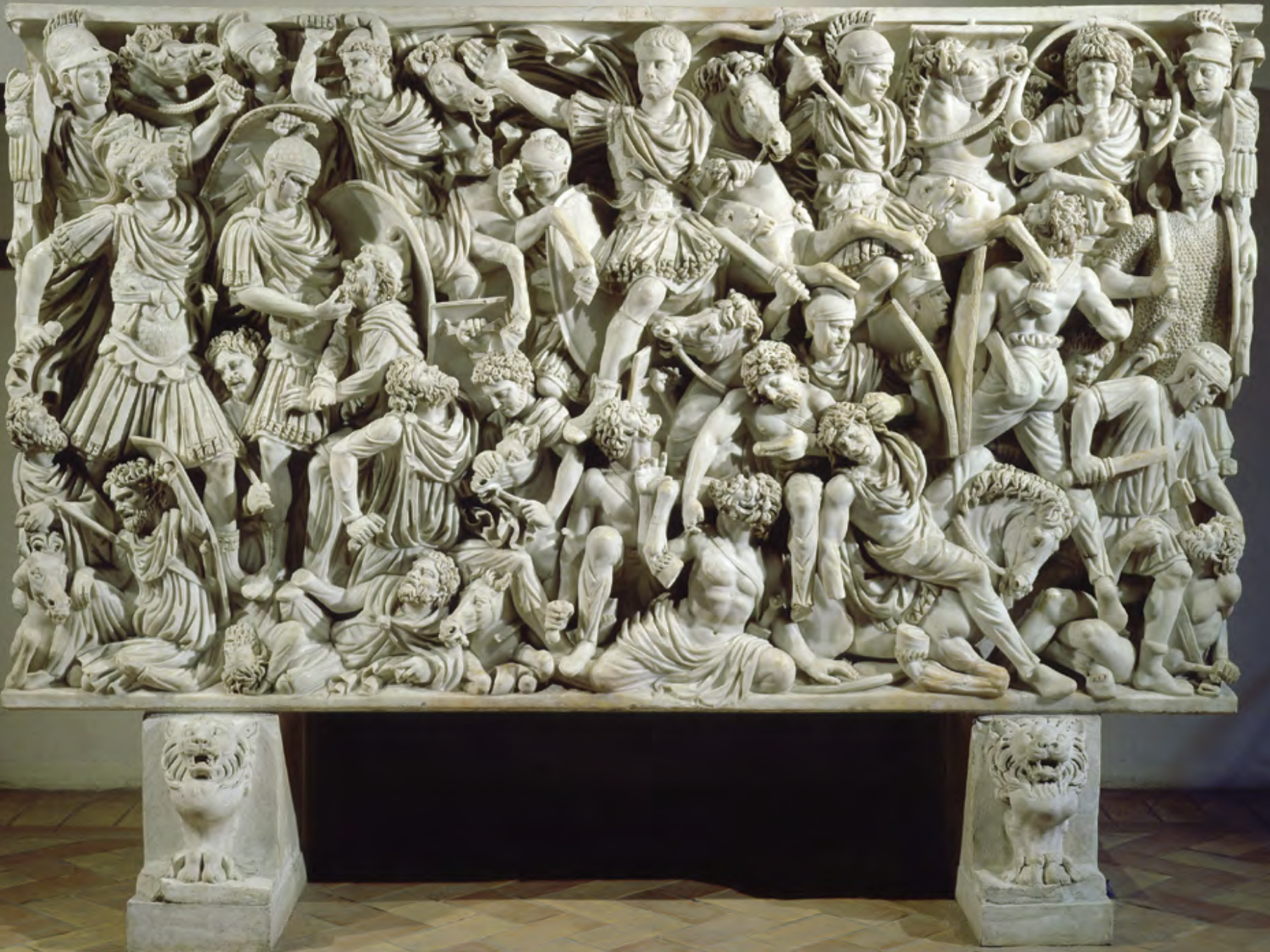
47. Ludovisi Battle Sarcophagus
When was it created?
During what period was it created?
Where was it originally located?
What culture made it?
What medium was used?
What was the function?
250 C.E. (3rd C).
During Late Imperial Rome.
Found inside a tomb in Vigna Berlusconi, near Porta Tiburtina.
The Ancient Romans.
From marble.
Is a sarcophagus that expresses the themes of good (Romans) over evil (Goths).
It is a memorial to the wars between the Ostrogoths and Imperial Romans.
The relief expresses how Romans viewed themselves as preservers of the civilization, by depicting the Roman soldiers as noble heroes and the Goths as barbarians. Thus, dehuminazes the enemy (Goths) and glorifying the victor (Romans).